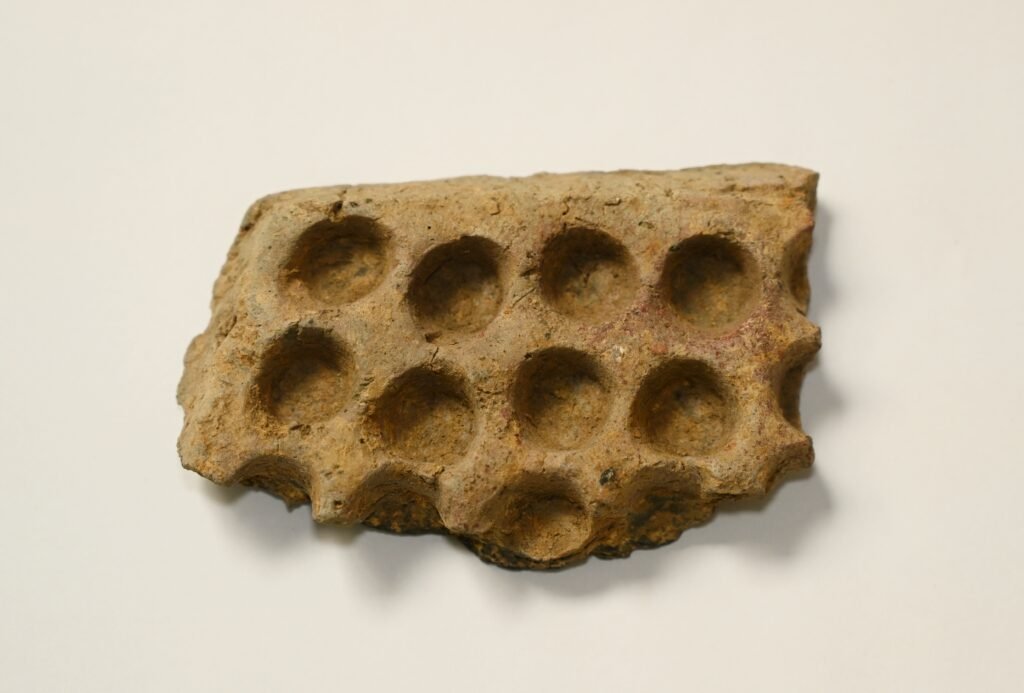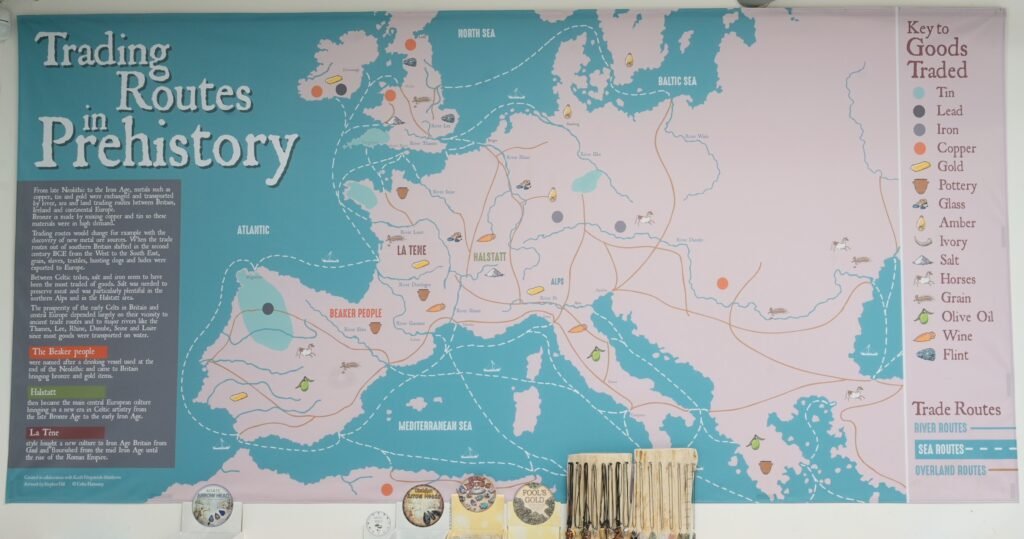Forging Currency in Late Iron Age Britain: Coin Pellet Moulds from Hertfordshire
As an Assistant Curator, one of the most exciting experiences for me is having the opportunity to handle artefacts, actually holding history in my hands, and think about the people from the past who would have last held and used these objects. Such an experience recently happened when unpacking some objects loaned to us by the Verulamium Museum in St Albans.
After carefully lifting the item from its box, I tentatively unwrapped the acid-free tissue paper used to protect it, revealing in the palms of my hands a fragment of a clay coin pellet mould. There are many remarkable traces of Iron Age Britain, yet few objects connect us so directly to the origins of coinage as coin pellet moulds do. These unassuming fragments, now on display in our Stone to Iron Age exhibition, were once part of a vital process that helped to expand the economic and political landscape of Celtic Britain.

Fragment of a coin pellet mould, Kindly loaned by St Albans Museums Service.
Dating from the Late Iron Age, the fragments that the Verulamium Museum loaned to us were discovered in Hertfordshire, a county with a rich prehistoric past and home to a significant Iron Age settlement for the Catuvellauni tribe named ‘Verlamion’, which would go on to develop into a major Roman city named ‘Verulamium’. Coin pellet moulds were used to produce small, round metal blanks – known as coin pellets – which would be transformed into coins. Either powdered or strips of metal would have been placed into the shallow indentations in the tray. Then, the entire mould would have been heated in a furnace, the scorch marks from this still evident on the base of the moulds, causing the metal to melt and settle into pellets.
Once cooled and removed from the trays, these pellets were hammered flat to create blank coin flans, and struck between two dies – an engraved tool used to stamp designs onto coins. A variety of designs, symbols, and inscriptions were used on Iron Age currency. These markings often indicated tribal identity, leaders’ names, or regional emblems, offering us valuable insights and evidence for the political and tribal structures of the time.
The mould fragments on loan to us were possibly part of a larger production site – evidence suggests that some Iron Age communities produced coins in significant quantities. One of these larger production sites was located at Verlamion, where a mint for the Catuvellauni was established, making it possible that these mould fragments were used at this particular mint. Tasciovanus and his son Cunobelinus, rulers of the Catuvellauni tribe, issued coins from this site that were circulated widely, showing their power, influence, and strong connections to trade networks. The territory of the Catuvellauni tribe was strategically situated near key trade routes, which were crucial in expanding the trading capacity of the tribe and their influence, allowing them to trade goods as far as mainland Europe.

Trading Routes Map during Prehistory, within the Prehistory Centre at Celtic Harmony Camp
Coin pellet moulds are more than tools—they are material evidence of innovation, craftsmanship, and identity. They remind us that long before the Romans introduced their own imperial coinage, Iron Age Britons were already producing their own money, on their own terms.
Celtic Harmony Camp is open to the general public on weekends, so you can visit us and see these fragments in person and take a step back into a world where molten metal, skilled hands, and tribal pride forged the earliest currency of Britain.
Lauren Shaw, Assistant Curator

